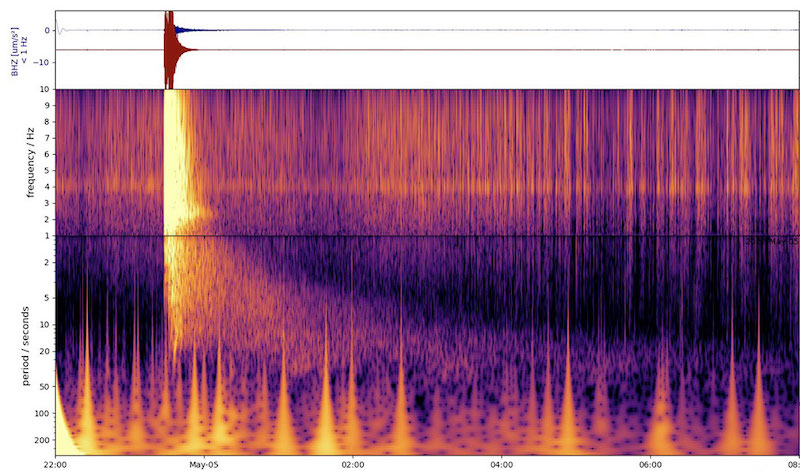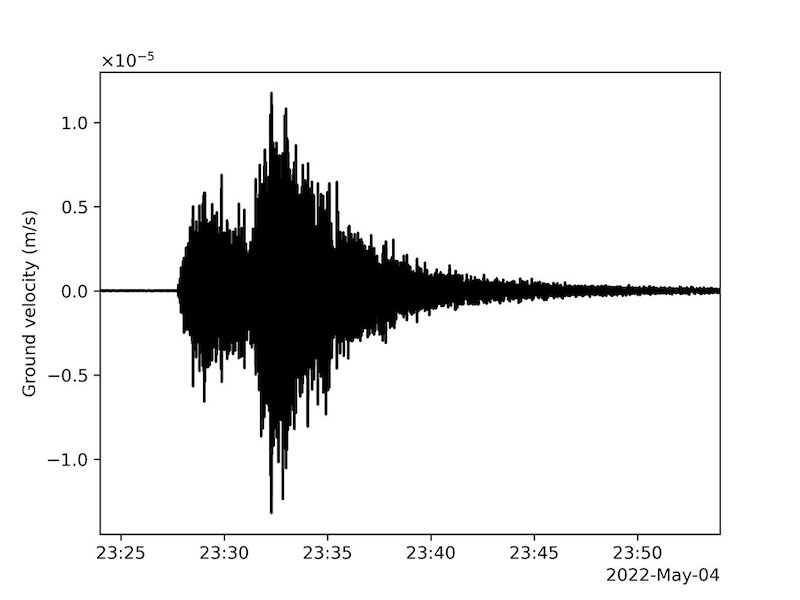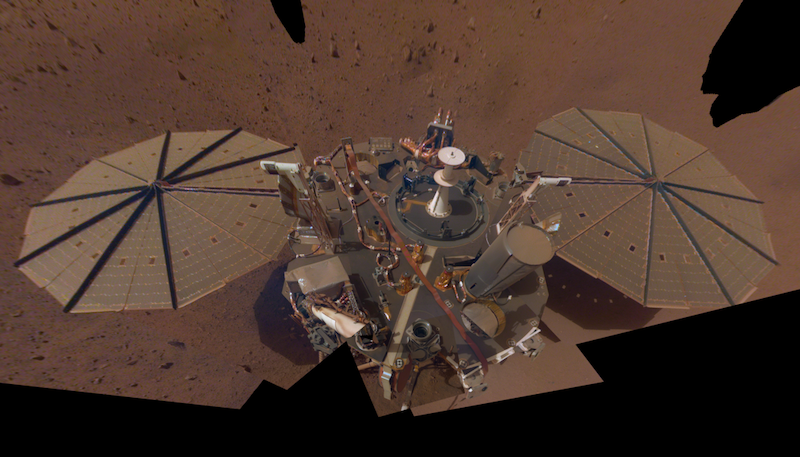
Earthquakes are common on our planet, and they can be big, with devastating consequences. The planet next outward from the sun, Mars, has quakes, too, which we’ve seen as milder so far. NASA’s InSight lander has been recording marsquakes since it set down on Mars in 2018. So far, the quakes have been low-key, up to magnitude 4.2. But on May 4, 2022 – the 1,222nd sol (Martian day) of the InSight mission – the lander felt its largest marsquake yet, at a record magnitude 5.0. It’s not just the biggest marsquake. It’s the biggest quake detected on another planet so far.

The ‘big’ one
On Earth, magnitude 5.0 is a medium-sized quake. On Mars, however, it’s near what scientists believe is the upper limit in quake strength.
Mission scientists refer to this new quake as “the big one.” The biggest so far, anyway. Bruce Banerdt, InSight’s principal investigator at NASA’s Jet Propulsion Laboratory (JPL) stated:
Since we set our seismometer down in December 2018, we’ve been waiting for ‘the big one.’ This quake is sure to provide a view into the planet like no other. Scientists will be analyzing this data to learn new things about Mars for years to come.
As NASA tweeted on May 9:
Felt that one??
After more than three years of listening to the soft rumbles of Mars, I just felt by far my biggest “marsquake” yet: looks like about magnitude 5. My team is studying the data to learn more. Science rewards patience!
More details: https://t.co/DKVy8tUrxU pic.twitter.com/bExr13Lkvw
— NASA InSight (@NASAInSight) May 9, 2022
As of right now, scientists are still pinning down the exact location of the quake and how it occurred. Mars doesn’t have active plate tectonics like Earth does, but evidence has grown in recent years that the planet is still geologically active below the surface. Indeed, the latest big quake proves that Mars is still “rocking and rolling” today.

New marsquake is the latest of many
Indeed, InSight has now recorded no less than 1,313 mars quakes so far. Previously, the largest quake detected was magnitude 4.2, on August 25, 2021.
Scientists had suspected that Mars still rumbled a bit below the surface, but InSight is the first mission to confirm it.
How many more times will InSight feel the Martian subsurface tremble?
A dusty problem
InSight’s mission has been incredibly successful overall, since it landed in Elysium Planitia on November 26, 2018. (Apart from the frustrating problems with its “mole” heat probe instrument.) At the moment, it is facing some new challenges, however. There is a lot more dust in the Martian air right now, which affects the lander’s solar panels. In fact, on May 7, the power level of the solar panels dipped below the limit where safe mode is enabled. During safe mode, only the most necessary functions of the rover still operate. As with safe mode on other spacecraft, this helps to protect the lander until power levels rise again. It’s kind of like a temporary hibernation.
InSight also entered, and then later exited, safe mode last January, after a dust storm kicked up large amounts of dust. Hopefully, InSight will be back to normal operations again soon this time as well!


NASA will be providing a media teleconference update on the status of InSight on Tuesday, May 17, 2022 at 2 p.m. EDT (11 a.m. PDT).
Mission goals
The InSight mission has two main goals. The first is to understand the formation and evolution of terrestrial planets through investigation of the interior structure and processes of Mars. The other primary objective is to determine the present level of tectonic activity and meteorite impact rate on Mars. InSight has already provided unprecedented insight into the geological history of Mars and potential habitability.
Bottom line: NASA’s InSight lander has just detected the biggest marsquake so far in its mission. Insight felt “the big one,” a record magnitude 5.0, on May 4, 2022.











